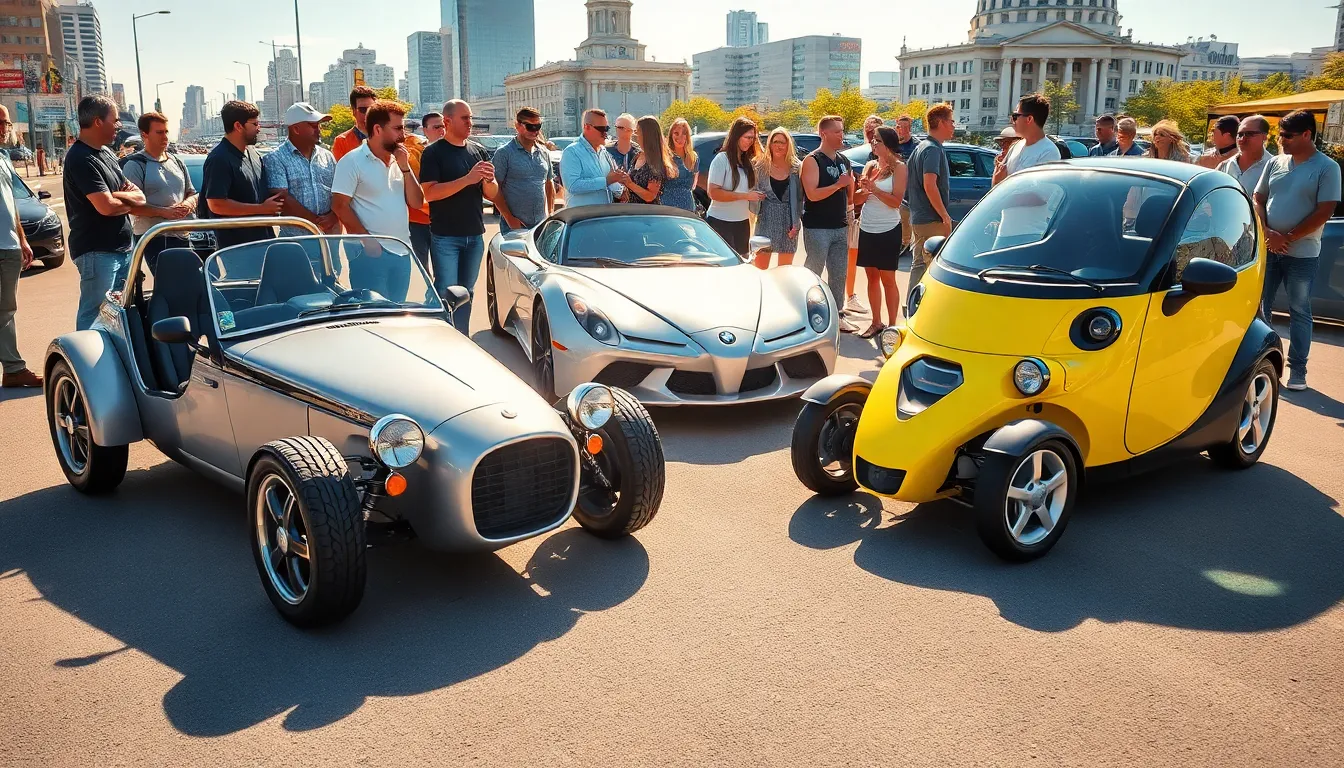We’ve all seen countless sedans and SUVs cruising down the highway but what about those extraordinary vehicles that make us do a double-take? The automotive industry is filled with unique cars that push boundaries challenge conventions and redefine what’s possible on four wheels.
From quirky one-off prototypes to limited-edition supercars that’ll never see mass production these remarkable vehicles represent the pinnacle of automotive creativity and engineering excellence. We’re talking about cars so distinctive that they become instant conversation starters wherever they park.
Whether you’re fascinated by bizarre concept cars that look like they rolled out of a sci-fi movie or drawn to ultra-rare classics that collectors would kill for we’ve compiled the most extraordinary automobiles ever created. Get ready to discover vehicles that prove the automotive industry’s most daring minds never stop pushing the envelope.
Bizarre Body Shapes That Defy Convention
We’ve witnessed automotive designers push boundaries to create vehicles that challenge our perception of what cars should look like. These unconventional shapes represent the boldest experiments in automotive form and function.
Three-Wheeled Wonders
Morgan 3-Wheeler delivers pure vintage charm with its aircraft-inspired design featuring a prominent V-twin engine mounted between two front wheels. This British roadster weighs just 1,157 pounds and produces an exhilarating driving experience that feels more like piloting a land-based fighter plane than cruising in a traditional car.
Polaris Slingshot transforms the three-wheel concept into a modern thrill machine with its reverse trike configuration placing two wheels in front and one in the rear. We see this design choice creating exceptional cornering stability while maintaining the open-air excitement that traditional motorcycles offer.
Campagna T-Rex takes aggressive styling to extremes with its angular bodywork and exposed mechanical components that showcase the engineering prowess beneath. This Canadian-built machine reaches 60 mph in just 3.9 seconds even though having only three contact points with the road.
Spherical and Bubble Designs
BMW Isetta pioneered the bubble car movement in the 1950s with its egg-shaped body and single front-opening door that made parking in tight European spaces remarkably simple. We appreciate how this tiny vehicle accommodated two adults in just 90 inches of overall length while achieving fuel economy figures that modern hybrids would envy.
Peel P50 holds the Guinness Industry Record as the smallest production car ever made, measuring only 54 inches long and 39 inches wide. This three-wheeled microcar from the Isle of Man weighs merely 130 pounds and features a handle on the rear for lifting and maneuvering when parking becomes impossible.
Messerschmitt KR200 combined aircraft manufacturing expertise with automotive innovation to create a tandem-seat bubble car with a distinctive clear canopy that opened like a fighter jet cockpit. We find its aerodynamic shape and lightweight construction enabled impressive fuel efficiency of over 85 miles per gallon.
Ultra-Low and Ground-Hugging Profiles
Vector W8 shocked the automotive industry in 1991 with its wedge-shaped profile standing just 42.5 inches tall and featuring sharp angular lines that made it appear ready for takeoff. This American supercar used aircraft-grade materials and aerospace engineering principles to achieve a drag coefficient of just 0.32.
Lamborghini Countach established the template for extreme low-slung supercars with its scissor doors and dramatically angled windshield that created visibility challenges drivers willingly accepted for the sake of style. We recognize this Italian icon’s 42-inch height as setting the standard for how low a road-legal vehicle could realistically go.
Ford GT40 earned its name from its remarkable 40-inch height restriction, which engineers achieved by positioning drivers in a nearly horizontal seating position that maximized aerodynamic efficiency. This racing legend’s ground-hugging stance contributed directly to its four consecutive Le Mans victories from 1966 to 1969.
Experimental Powertrains Beyond Gasoline
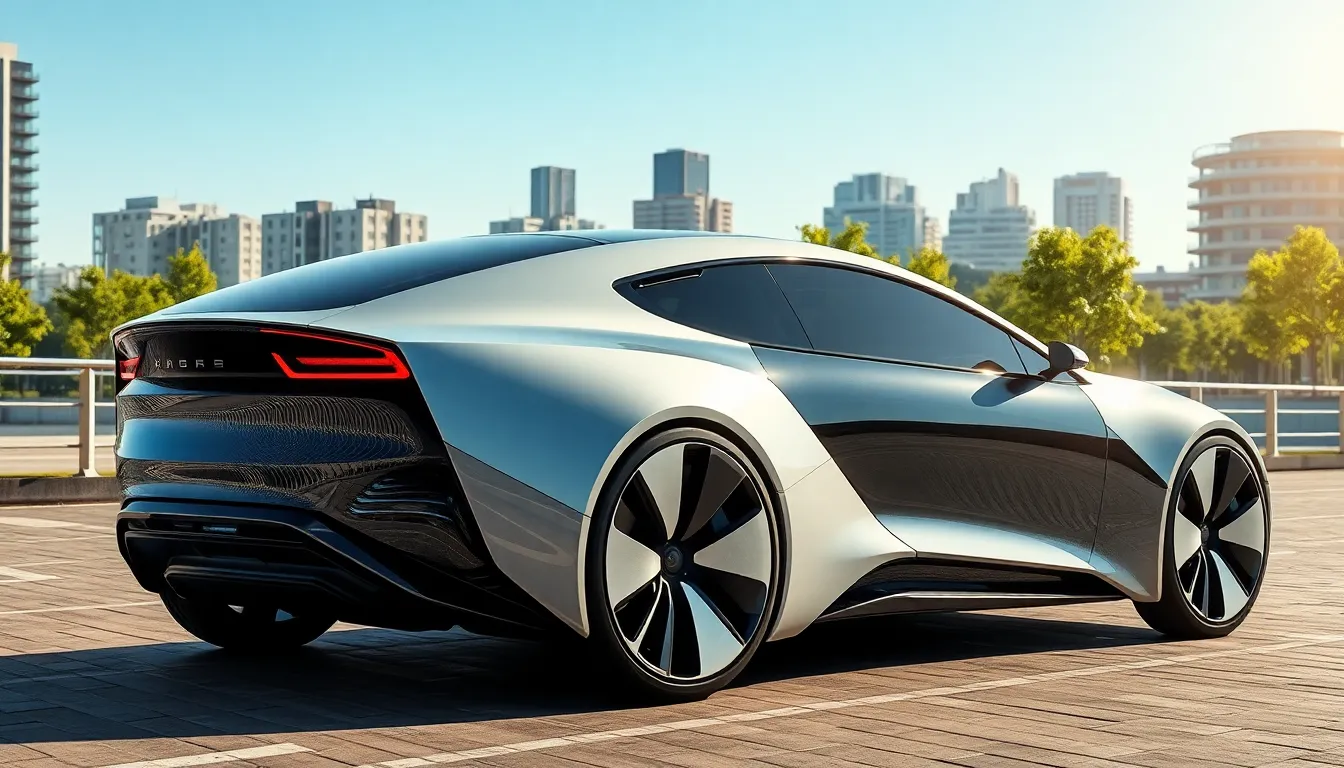
Automotive pioneers continue pushing boundaries beyond unconventional shapes by exploring radical energy sources that could revolutionize transportation. We’ve witnessed remarkable experiments with alternative powertrains that challenge everything we know about automotive propulsion.
Solar-Powered Vehicles
Solar cars represent one of the most ambitious attempts to harness renewable energy for transportation. The Lightyear One demonstrated this technology’s potential by achieving over 440 miles of range using integrated solar panels across its body surface. We’ve seen racing competitions like the Industry Solar Challenge inspire manufacturers to develop practical applications for everyday driving.
Aptera Motors plans to launch the industry’s first mass-produced solar vehicle, featuring 1,000 miles of range and never-charge capability for most daily commutes. Their design incorporates 180 solar cells that generate up to 45 miles of driving per day from sunlight alone. Toyota’s Prius Prime offers a solar roof option that provides approximately 6 miles of additional range daily.
Mercedes Benz created the SLR McLaren Stirling Moss concept with solar integration, while Sono Motors developed the Sion with 248 solar cells embedded throughout its exterior panels.
Compressed Air Engines
Compressed air technology offers zero-emission propulsion through stored pneumatic energy that powers pistons similar to traditional combustion engines. The MDI AirPod achieved city speeds up to 50 mph using only compressed air stored in carbon fiber tanks at 4,500 psi pressure. We’ve observed this technology’s appeal in its simplicity and instant refueling capability within minutes.
Tata Motors partnered with MDI to develop the OneCAT, designed for urban transportation with a 125-mile range and 68 mph top speed. The vehicle features a unique dual-mode system that combines compressed air with small fuel combustion for extended range. Peugeot experimented with Hybrid Air technology in their 208 and 2008 models, using compressed nitrogen to power city driving.
Zero Pollution Motors proposed the AirPod for American markets, emphasizing its potential for emission-free urban mobility and remarkably low operating costs.
Nuclear-Powered Concept Cars
Nuclear propulsion concepts emerged during the atomic age when engineers envisioned cars powered by miniature reactors or radioactive materials. The Ford Nucleon concept from 1958 featured a reactor positioned in the rear, designed to run for 5,000 miles between uranium refuelings. We’ve studied these designs as fascinating examples of mid-century atomic optimism.
General Motors developed the Firebird III in 1958 with plans for eventual nuclear power integration, though they never implemented actual radioactive systems. The concept included titanium body construction to withstand radiation and featured autonomous driving capabilities decades before modern self-driving technology.
Simca Fulgur represented French atomic car ambitions with its nuclear-powered design capable of 90 mph speeds and voice-controlled navigation. Chrysler’s Nucleon concept promised 80,000-mile intervals between reactor maintenance, showcasing the era’s boundless faith in atomic energy applications for consumer vehicles.
One-of-a-Kind Custom Builds
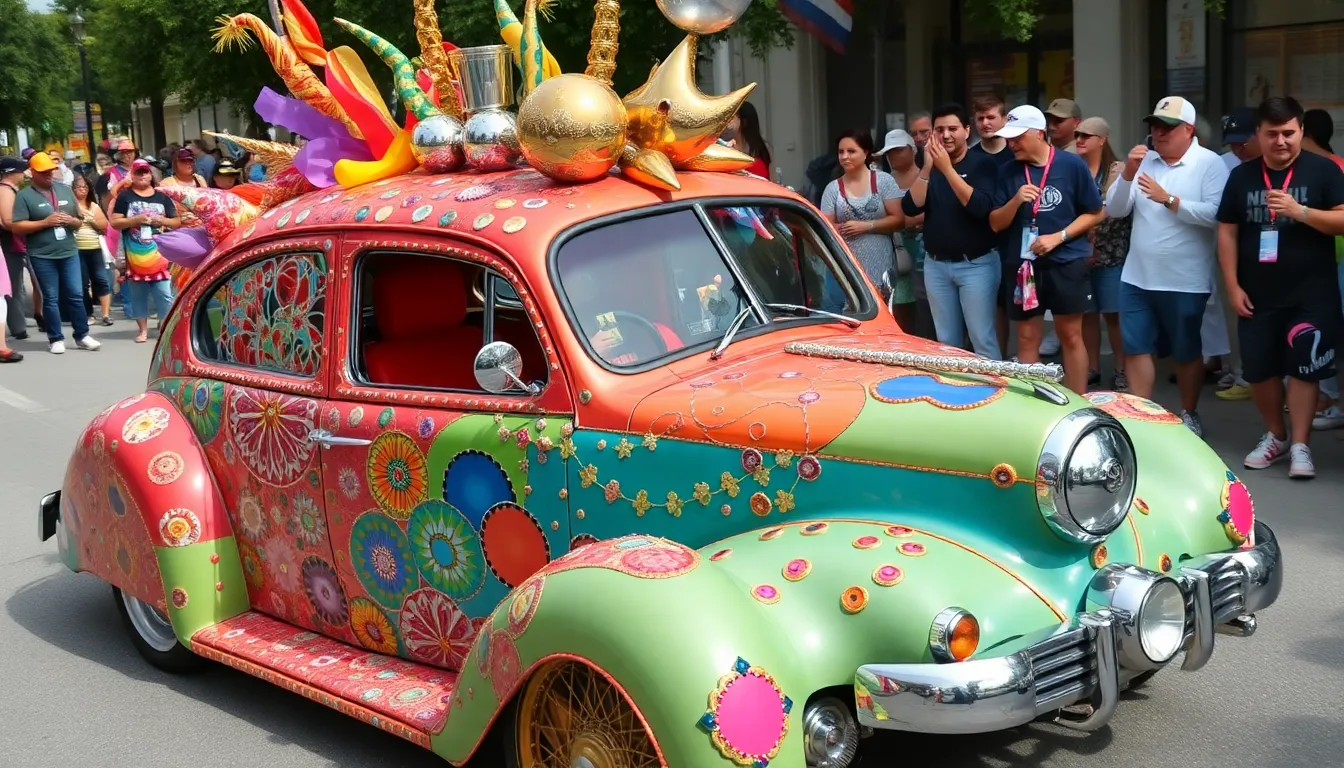
Custom car builders represent the ultimate expression of automotive creativity, transforming ordinary vehicles into extraordinary works of art. These unique builds showcase the limitless possibilities when skilled craftspeople combine imagination with technical expertise.
Hand-Crafted Art Cars
Art cars transform vehicles into rolling sculptures that challenge our perception of transportation. These unique creations emerge from artists who view automobiles as blank canvases for expressing their wildest visions. The Houston Art Car Museum houses over 40 incredible examples, including Leonard Knight’s Salvation Mountain car covered entirely in biblical messages and colorful paint.
Artists spend thousands of hours meticulously applying materials like bottle caps, mirrors, and found objects to create these masterpieces. The famous “Oh My God” art car by Rebecca Caldwell features over 10,000 mirrors that create dazzling light displays as it moves. Harrod Blank’s “Camera Van” incorporates more than 2,750 functional cameras into its design, making it both an art piece and a mobile photography studio.
Many art cars participate in annual parades and festivals where hundreds of these unique vehicles gather. The Houston Art Car Parade attracts over 250,000 spectators annually, featuring everything from dragon-shaped vehicles to cars covered in artificial grass. These events celebrate the intersection of automotive culture and artistic expression.
Movie and TV Show Replicas
Movie replica builders dedicate years to recreating iconic vehicles from popular films and television shows. Professional replica makers like George Barris, who created the original Batmobile, inspired countless enthusiasts to build their own versions of famous cars. A screen accurate 1989 Batmobile replica can cost upward of $150,000 to build properly.
Television shows have spawned entire communities of replica builders who share techniques and resources. The General Lee from “The Dukes of Hazzard” remains one of the most replicated TV cars, with over 300 documented builds worldwide. Knight Rider’s KITT has inspired builders to install working scanner lights, computerized dashboards, and even voice recognition systems.
Film replica accuracy often requires sourcing rare parts and custom fabrication work. Building a proper DeLorean time machine from “Back to the Future” involves installing flux capacitor replicas, time circuits, and Mr. Fusion reactors that cost thousands of dollars. Mad Max: Fury Road replicas demand extensive metalwork skills to achieve the post-apocalyptic weathering and armor plating.
Personal Vision Projects
Individual builders create one off vehicles that reflect their personal automotive dreams and engineering challenges. These projects often take decades to complete as builders learn new skills and refine their visions. Jay Ohrberg’s 100-foot-long limousine holds the Guinness Industry Record as the longest car ever built, featuring 26 wheels and a helicopter landing pad.
Many personal builds combine elements from multiple vehicle types to create entirely new categories. The Tyrrell P34 inspired home builders to create six-wheeled street cars that blend Formula 1 aesthetics with road car practicality. Some enthusiasts build amphibious vehicles by combining car and boat components, creating unique transportation that works on land and water.
These unique builds often push the boundaries of what’s legally drivable on public roads. Custom builders must navigate complex regulations while pursuing their visions, often working with engineers to ensure safety standards. The result is a diverse industry of one off vehicles that showcase human creativity and the endless possibilities of automotive modification.
Failed Production Cars That Never Made It
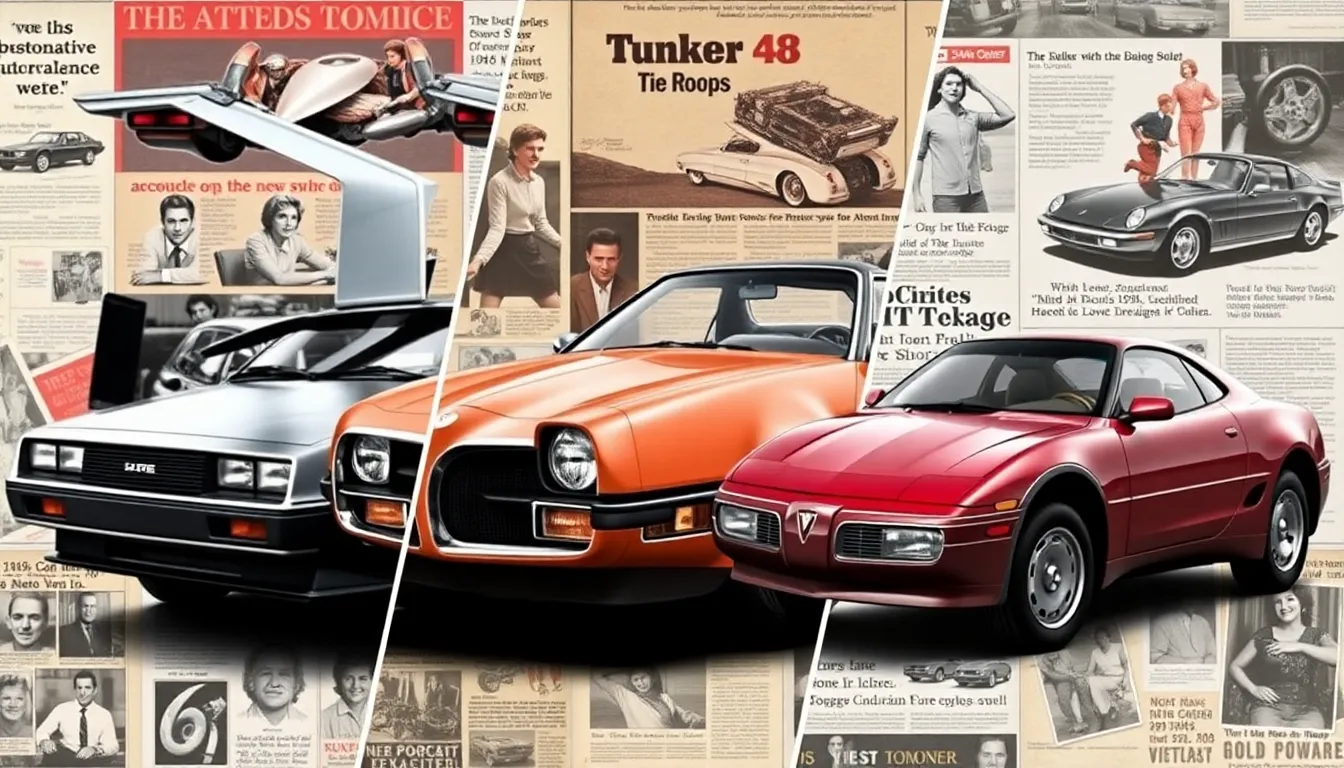
While we’ve explored incredible custom builds and experimental vehicles, the automotive industry also has a graveyard of ambitious production cars that never reached consumers. These failed attempts reveal the challenging balance between innovation and market reality.
Overly Ambitious Designs
The DeLorean DMC-12 promised luxury and performance but delivered disappointment through underpowered engineering and quality issues. John DeLorean’s vision included gull-wing doors and a stainless steel body, yet the car’s 130-horsepower engine couldn’t justify its $25,000 price tag in 1981. Production ceased after just 9,000 units when the company collapsed amid financial scandals.
Preston Tucker’s Tucker 48 featured revolutionary safety innovations including a padded dashboard, pop-out windshield, and rear-mounted engine. Tucker incorporated a cyclops headlight that turned with the steering wheel and planned disc brakes decades before they became standard. Even though generating massive public interest and taking 50,000 deposits, only 51 cars were built before the SEC shut down production in 1948.
The Bricklin SV-1 attempted to create the industry’s safest sports car with its acrylic body panels and integrated safety systems. Malcolm Bricklin invested heavily in color-changing paint and energy-absorbing bumpers, but the car’s 11-second 0-60 time and frequent door malfunctions frustrated buyers. Production ended in 1975 after just 2,854 units and $23 million in losses.
Market Timing Disasters
The Edsel Ford Ranger became synonymous with marketing failure even though Ford’s $400 million investment and three years of development. Ford launched the Edsel in September 1957 just as the economy entered recession and consumers shifted toward compact cars. The distinctive horse collar grille and push-button transmission couldn’t overcome poor timing, with only 110,847 units sold across four model years.
General Motors EV1 represented electric vehicle technology decades ahead of its time, featuring advanced battery systems and aerodynamic efficiency. GM produced 1,117 EV1s between 1996 and 1999, but the company terminated the program citing insufficient demand and high production costs. The controversial recall and destruction of nearly all EV1s sparked conspiracy theories and inspired the documentary “Who Killed the Electric Car?”
The Pontiac Aztek arrived in 2001 with bold styling that polarized consumers during an era favoring conventional SUV designs. Pontiac marketed the Aztek’s versatility with camping accessories and modular features, but its unusual proportions and plastic cladding alienated traditional buyers. Sales never exceeded 30,000 units annually, leading to its discontinuation in 2005.
Technical Innovation Failures
The Chrysler Turbine Car showcased jet engine technology adapted for automotive use, running on virtually any combustible liquid including tequila and perfume. Chrysler distributed 55 turbine cars to selected families for real-industry testing between 1963 and 1966, but the engines produced excessive heat and poor fuel economy. Manufacturing costs and emissions regulations eventually killed the program even though the technology’s reliability.
The NSU Ro 80 pioneered the rotary Wankel engine in luxury sedan form, winning European Car of the Year in 1967 for its advanced engineering and aerodynamic design. NSU’s rotary engine delivered smooth power delivery and compact packaging, but apex seal failures plagued reliability throughout the car’s production run. Warranty claims bankrupted NSU, forcing its sale to Volkswagen in 1969 after producing only 37,398 units.
The Yugo GV attempted to bring Yugoslav engineering to American shores at an incredibly low $3,990 price point in 1985. Malcolm Bricklin imported these Fiat-based cars as affordable transportation, but quality control issues and poor build materials created legendary reliability problems. Even though selling 141,651 units in the US, the Yugo’s reputation for breaking down became a cultural punchline, ending importation by 1992.
Celebrity-Owned Unique Cars

Celebrity garages often house some of the most extraordinary and personalized vehicles on the planet. These stars use their wealth and influence to commission one-of-a-kind automobiles that reflect their personalities and push automotive boundaries.
Musicians’ Wild Rides
Musicians transform their cars into extensions of their artistic expression, creating rolling masterpieces that match their stage personas. Jay-Z commissioned a custom Maybach Exelero worth $8 million, featuring a twin-turbo V12 engine and sleek black design that became an icon of hip-hop luxury. Lady Gaga owns a 1993 Ford SVT Lightning pickup truck wrapped entirely in Louis Vuitton leather, combining high fashion with American muscle in an unexpected fusion.
Elton John’s collection includes a custom Bentley Continental GT covered in rainbow crystals and sequins, reflecting his flamboyant stage presence. The vehicle required over 300 hours of hand-applied decoration and weighs an additional 200 pounds from the embellishments. Travis Scott partnered with Nike to create a custom Lamborghini Huracan with Air Jordan colorways, featuring the iconic “Cactus Jack” branding throughout the interior and exterior.
Athletes’ Custom Collections
Athletes often choose vehicles that match their competitive spirit and desire for performance excellence. Shaquille O’Neal owns a custom Superman-themed Smart car that was stretched to accommodate his 7-foot-1 frame, complete with the superhero’s logo and color scheme. The modification required extensive engineering to maintain safety standards while providing adequate space for the basketball legend.
LeBron James commissioned a custom Lamborghini Aventador with a carbon fiber body featuring his “King James” crown logo integrated into the paint design. The vehicle produces 700 horsepower and reaches 60 mph in just 2.9 seconds. Cristiano Ronaldo’s garage includes a one-off Bugatti Centodieci worth $9 million, one of only 10 ever produced, featuring 1,600 horsepower and a top speed of 236 mph.
Hollywood Stars’ Eccentric Choices
Hollywood celebrities often gravitate toward vehicles that make bold statements and challenge conventional automotive design. Nicolas Cage famously owned a pyramid-shaped car called the “Lamborghini LM002,” nicknamed the “Rambo Lambo,” which combined supercar engineering with military-inspired styling. The vehicle featured a 5.2-liter V12 engine originally designed for the Countach and could traverse desert terrain at high speeds.
Will Smith invested in a custom trailer worth $2.5 million that expands into a luxury mobile home complete with marble floors, a full kitchen, and a screening room. The 1,150-square-foot vehicle required special permits to operate on public roads and serves as his base during film productions. Johnny Depp’s collection includes a custom 1959 Corvette with a hand-painted pirate theme, featuring skull and crossbones motifs that reflect his iconic Captain Jack Sparrow character.
Tom Hanks owns a converted 1980 Toyota FJ40 Land Cruiser that was completely rebuilt with modern electric components while maintaining its classic exterior appearance. The conversion produces 300 horsepower through dual electric motors and offers 200 miles of range, combining environmental consciousness with vintage aesthetics.
Record-Breaking Unique Cars
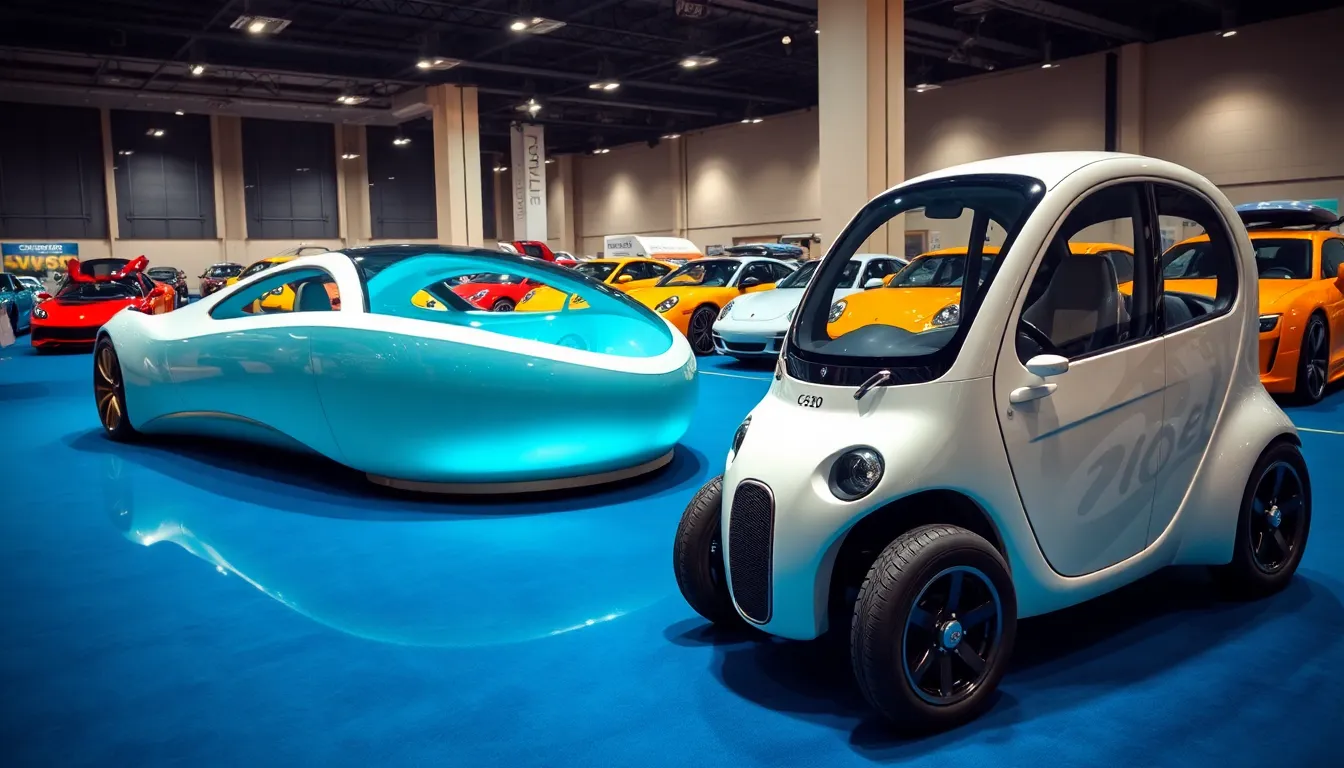
These automotive marvels push the boundaries of what’s possible when innovation meets pure determination. Record breaking unique cars demonstrate how passionate builders and manufacturers can achieve extraordinary feats.
Fastest Homemade Vehicles
Jet-powered creations dominate the industry of fastest homemade vehicles, with builders pushing speeds that rival professional racing teams. Craig Breedlove’s Spirit of America series reached over 600 mph in the 1960s, establishing the foundation for modern land speed racing. Art Arfons’ Green Monster vehicles achieved multiple industry records, with his turbine-powered car hitting 576 mph at Bonneville Salt Flats.
Rocket-powered vehicles represent the most extreme approach to homemade speed machines. Steve Huff’s rocket dragster achieved quarter-mile times under 6 seconds, generating over 10,000 horsepower from its liquid-fuel rocket motor. Amateur builders like Tim Pickens have constructed rocket cars capable of exceeding 300 mph using surplus aerospace components.
Modified production cars showcase how dedicated enthusiasts transform everyday vehicles into record breakers. Underground Racing’s twin-turbo Lamborghinis have achieved over 250 mph on public highways, while Hennessey Performance’s modified vehicles regularly break 270 mph. These builders combine advanced aerodynamics with extreme power modifications to achieve factory supercar performance levels.
Largest and Smallest Cars
Massive custom builds challenge our understanding of what constitutes a road-legal vehicle, with some creations requiring special permits just to operate. The longest car ever built measured 100 feet and included amenities like a swimming pool, helipad, and master bedroom. Sheikh Hamad Bin Hamdan Al Nahyan’s collection features pyramid-shaped SUVs and globe-shaped vehicles that dwarf conventional automobiles.
Miniature marvels demonstrate precision engineering on the opposite end of the spectrum, proving that smaller can be more challenging to build. The Peel P50 remains the smallest production car at just 54 inches long and weighing 130 pounds, yet it’s street legal in most jurisdictions. Custom builders have created even tinier vehicles, with some measuring less than 3 feet in length while maintaining basic automotive functions.
Scale extremes create fascinating contrasts when these vehicles appear together at automotive shows and exhibitions. Monster trucks like Bigfoot #5 stand over 15 feet tall with 10-foot diameter tires, while micro cars can literally drive underneath them. These size variations showcase the incredible diversity possible in automotive design and engineering.
| Vehicle Type | Length | Height | Notable Feature |
|---|---|---|---|
| Longest Car | 100 feet | 10 feet | Swimming pool included |
| Peel P50 | 54 inches | 47 inches | Weighs only 130 pounds |
| Bigfoot #5 | 15.6 feet | 15.6 feet | 10-foot diameter tires |
| Perry Watkins’ car | 41 inches | 20 inches | Street legal in UK |
Most Expensive One-Offs
Commissioned automotive art reaches astronomical prices when wealthy collectors combine unlimited budgets with visionary designers. The Rolls Royce Boat Tail cost over $28 million and features hand-crafted bodywork inspired by luxury yachts from the 1930s. Bugatti’s La Voiture Noire sold for $18.7 million, representing the pinnacle of bespoke automotive luxury with its carbon fiber construction and 1,500 horsepower engine.
Historic restoration projects command premium prices when legendary vehicles receive complete rebuilds using period-correct methods and materials. Ferrari 250 GTO restorations can exceed $10 million when conducted to concours standards, with some examples selling for over $70 million at auction. These projects often take multiple years and involve tracking down original components from around the industry.
Modern hypercar exclusives represent the cutting edge of expensive one-off manufacturing, combining advanced materials with limited production runs. The McLaren F1 LM prototype sold for $19.8 million, while the Mercedes-Benz CLK GTR achieved $8.8 million at auction. These vehicles showcase how modern engineering capabilities can justify extreme price points through performance and exclusivity.
Celebrity commissions add premium valuations through association with famous owners and unique customization requirements. Elvis Presley’s custom Cadillacs regularly sell for over $1 million, while Steve McQueen’s Porsche 917K from “Le Mans” achieved $14 million at auction. These vehicles combine automotive excellence with cultural significance, creating investment grade collectibles that appreciate over time.
Concept Cars That Changed Everything
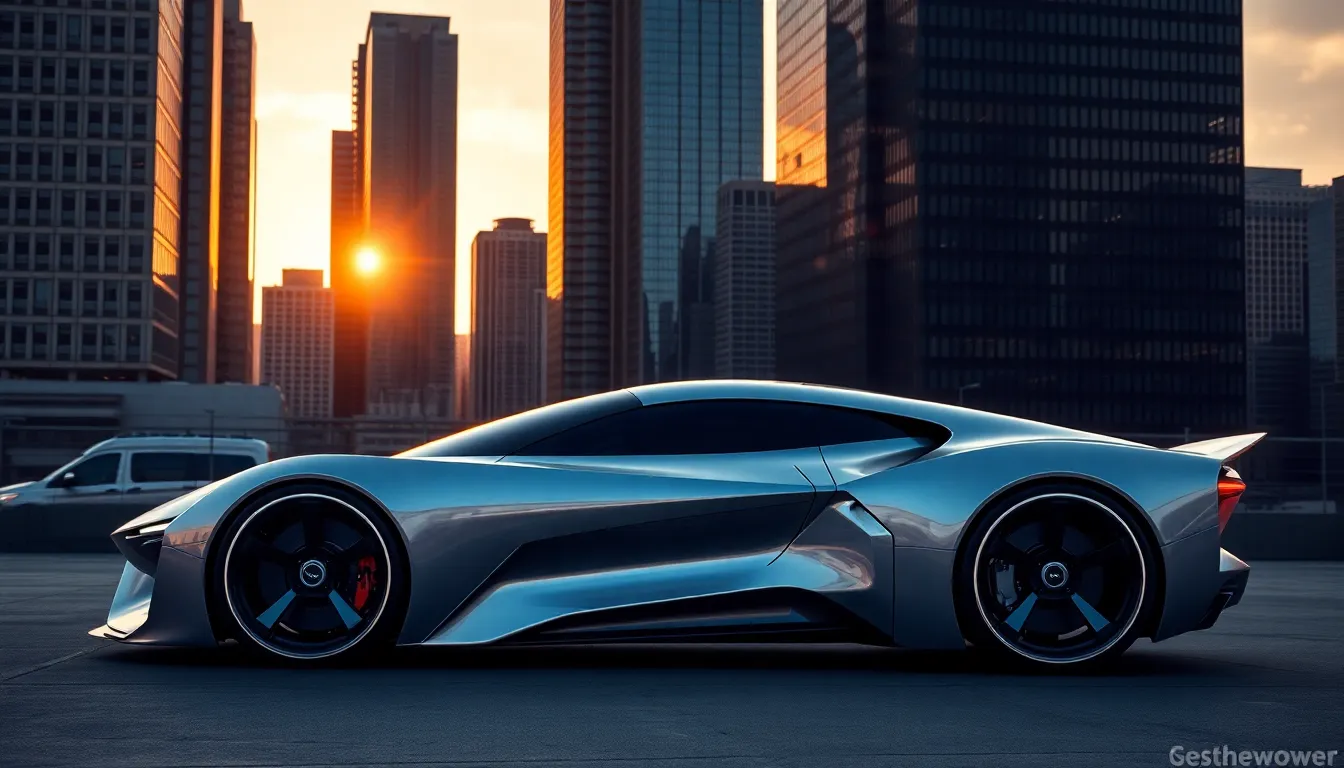
Revolutionary design languages and groundbreaking technologies emerge from concept cars that reshape automotive thinking. These visionary vehicles bridge the gap between dreams and reality, often becoming the blueprint for future production models.
Revolutionary Design Languages
BMW GINA (2008) introduced us to shape-shifting automotive skin through its fabric exterior that could change form at the driver’s command. This groundbreaking concept challenged our understanding of fixed automotive surfaces and demonstrated how cars could adapt their appearance based on function and aesthetics.
Citroën Karin (1980) presented a radical pyramid shaped cockpit that influenced angular design themes throughout the 1980s. Designers created this glass pyramid concept to explore how geometric forms could redefine passenger compartment architecture, leading to production cars like the BX and XM that carried forward these bold angular elements.
Lancia Stratos HF Zero (1970) established the wedge shape language that dominated supercar design for decades. Marcello Gandini’s triangular profile became the DNA for the Lamborghini Countach and influenced countless sports car designs, proving that extreme geometric forms could translate into production reality.
Mercedes F015 Luxury in Motion (2015) reimagined automotive proportions for the autonomous driving era. This concept stretched traditional sedan dimensions and introduced lounge like interior layouts that prioritized passenger interaction over driver control, setting the stage for future self driving vehicle designs.
Technology Showcase Vehicles
General Motors Firebird series (1953-1959) pioneered jet age automotive technology with turbine engines and aerospace inspired control systems. These concepts introduced us to technologies like anti lock braking, electronic fuel injection, and titanium construction that wouldn’t appear in production vehicles until decades later.
Toyota i-unit (2005) demonstrated personal mobility through its transformable single seat design that could switch between upright and reclined driving positions. This concept explored how vehicles could adapt to different environments, from crowded urban spaces to high speed highway travel.
Mercedes BIOME (2010) showcased biological automotive materials through its grown rather than manufactured construction concept. Engineers proposed using specially cultivated organic materials that would biodegrade at the end of the vehicle’s life cycle, introducing sustainability concepts that continue influencing modern eco friendly vehicle development.
Audi RSQ (2004) integrated advanced driver assistance systems and spherical wheel technology for the film “I, Robot.” This concept introduced mainstream audiences to autonomous driving capabilities and unconventional wheel designs that influenced Audi’s current virtual cockpit and driver assistance technologies.
Future Mobility Answers
GM Hy-wire (2002) eliminated traditional automotive architecture through its skateboard platform design that separated propulsion systems from passenger compartments. This hydrogen fuel cell concept established the foundation for modern electric vehicle platforms and demonstrated how removing conventional drivetrains could revolutionize vehicle packaging.
Rinspeed Oasis (2017) transformed vehicles into mobile living spaces with integrated garden beds and flexible seating arrangements. This concept explored how autonomous vehicles could become extensions of our homes and offices, featuring connectivity systems that allow passengers to work, relax, or even grow plants during their commute.
BMW Vision Next 100 (2016) introduced adaptive vehicle intelligence through its Alive Geometry exterior panels that could communicate with passengers and other road users. This shape shifting concept demonstrated how future vehicles might express emotions and intentions through ever-changing surface changes.
Volkswagen ID.BUZZ (2017) revived the iconic microbus concept with modern electric propulsion and autonomous driving capabilities. This production bound concept proved that nostalgic design languages could successfully integrate with cutting edge technology, influencing VW’s current electric vehicle strategy and demonstrating market appetite for retro futuristic designs.
DIY and Garage-Built Masterpieces

We’ve witnessed countless automotive enthusiasts transform their passion into reality through sheer determination and creative ingenuity. These garage-based projects often produce some of the most remarkable vehicles on Earth.
Backyard Engineering Marvels
Stunning innovations emerge when dedicated builders tackle complex engineering challenges in their home workshops. We’ve documented incredible achievements like the Brunton Stalker, a mid-engine supercar built by a farmer in his barn using motorcycle engines and custom-fabricated chassis components. Building from scratch requires extraordinary technical knowledge, as demonstrated by the Factory Five Racing community, where kit car builders achieve professional-grade performance using Ford Mustang drivetrains and lightweight fiberglass bodies.
Creating jet-powered vehicles has become a specialty among extreme DIY builders, with projects like the jet-powered Volkswagen Beetle achieving speeds exceeding 200 mph using surplus aircraft engines. Fabricating custom suspension systems and roll cages demands precision welding skills that many amateur builders have mastered through years of practice and experimentation.
Designing replica supercars has spawned entire communities of builders who share blueprints and techniques for recreating Lamborghinis, Ferraris, and McLarens using donor chassis from common production vehicles. Engineering answers for complex problems often leads to innovations that surpass original manufacturer specifications, particularly in weight reduction and aerodynamic efficiency.
Recycled and Upcycled Materials
Transforming discarded materials into functional automotive components showcases the resourcefulness of garage builders worldwide. We’ve seen remarkable examples like the “Trash Car” built entirely from recycled aluminum cans and plastic bottles, achieving remarkable fuel efficiency through extreme lightweight construction. Repurposing aircraft parts has become increasingly popular among builders seeking high-strength materials, with surplus fighter jet components finding new life in custom supercar builds.
Converting old shipping containers into vehicle bodies creates unique mobile homes and expedition vehicles that retain the structural integrity of maritime transport. Salvaging components from multiple donor vehicles allows builders to combine the best features from different manufacturers, creating hybrid powertrains that wouldn’t exist in production cars.
Utilizing recycled carbon fiber from aerospace applications enables amateur builders to achieve professional-level weight savings at fraction of new material costs. Incorporating reclaimed wood elements into interior designs has produced stunning results, particularly in custom hot rod builds where vintage materials complement modern performance upgrades.
Amateur Builder Success Stories
Achieving recognition in professional automotive circles represents the ultimate validation for garage builders who started with simple tools and ambitious dreams. We’ve followed the journey of Steve Saleen, who began modifying Mustangs in his garage before founding Saleen Automotive and producing factory-backed performance vehicles. Winning major automotive design competitions has launched several amateur builders into successful careers, including Henrik Fisker, who started as an independent designer before creating the Karma electric vehicle.
Completing decade-long builds often results in vehicles that rival or exceed manufacturer quality standards, as demonstrated by the countless Cobra replica builders who’ve achieved concours-level craftsmanship. Establishing kit car companies from successful garage builds has created an entire industry segment, with companies like Caterham Cars originating from enthusiast projects that gained commercial success.
Setting speed records with homemade vehicles proves that garage engineering can compete with factory teams, exemplified by amateur builders who’ve achieved land speed records at Bonneville Salt Flats using innovative aerodynamic designs and modified production engines. Inspiring automotive manufacturers to hire talented amateurs demonstrates how garage-built masterpieces serve as proving grounds for future automotive innovation.
Unique Cars From Different Cultures
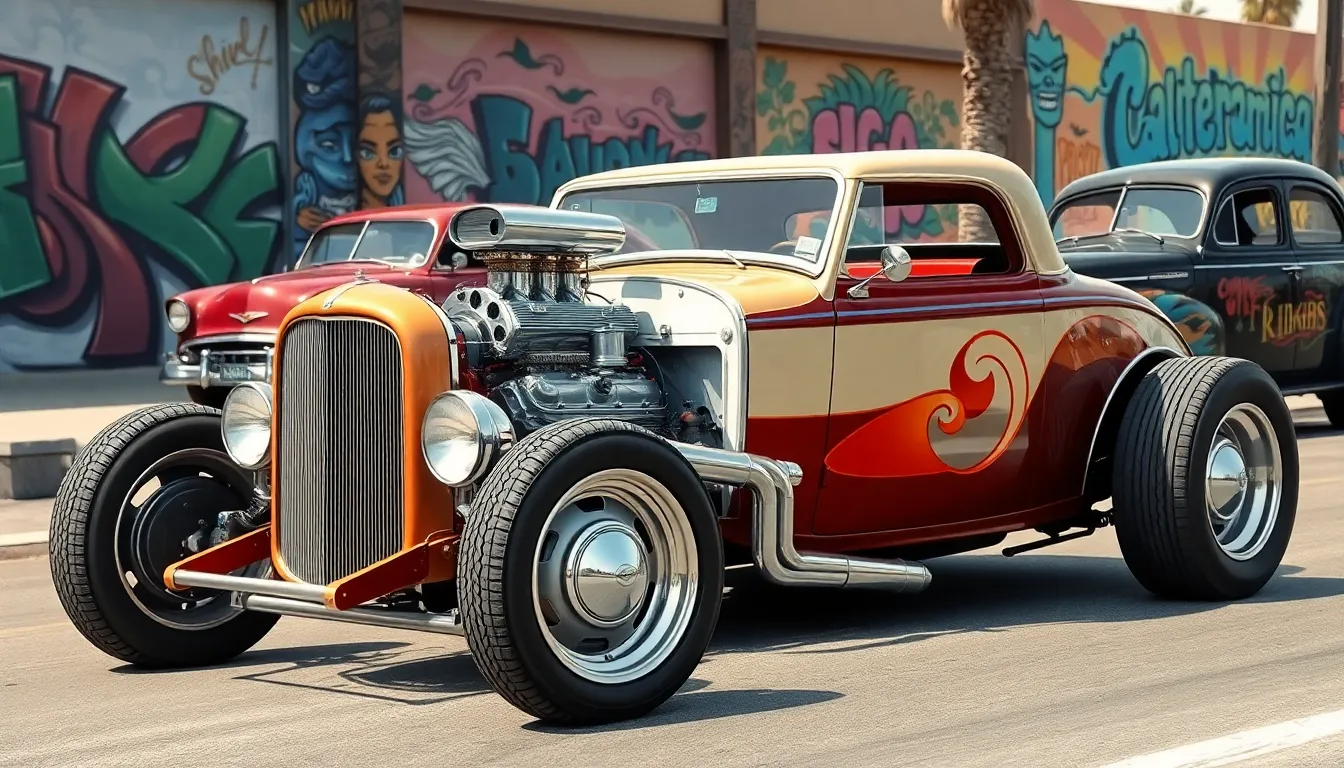
Cultural automotive traditions have shaped some of the most distinctive vehicles we’ve ever encountered. Each region’s unique approach to car design reflects local needs, values, and creative philosophies that continue to influence global automotive innovation.
Japanese Kei Car Creativity
Japanese kei cars represent the ultimate fusion of necessity and innovation in compact vehicle design. These miniature marvels must conform to strict dimensional limits of 3.4 meters in length, 1.48 meters in width, and 2.0 meters in height, while maintaining engines under 660cc displacement.
Honda’s N-Box pushes spatial efficiency to extraordinary levels by maximizing interior volume within these constraints. Manufacturers achieve remarkable interior spaciousness through ultra-thin door panels, innovative seat configurations, and creative storage answers that would make luxury car designers envious.
Suzuki’s Cappuccino demonstrates how kei regulations can produce legitimate sports cars with removable roof panels and rear-wheel drive dynamics. Autozam AZ-1 takes this concept further with its gullwing doors and mid-mounted engine, creating a supercar experience in a package smaller than most American golf carts.
Daihatsu’s Move Custom showcases the artistic potential of kei car design through its bold geometric styling and LED light arrays. These vehicles often feature colors and graphics that would appear outrageous on larger cars but perfectly complement their playful proportions and urban mission.
European Microcars
European microcars emerged from post-war necessity but evolved into expressions of minimalist design philosophy and urban mobility answers. These tiny vehicles prioritized fuel efficiency and city maneuverability over conventional automotive expectations.
Isetta’s bubble-shaped body and front-opening door created an entirely new vehicle archetype that influenced decades of city car development. BMW’s engineering transformed this Italian concept into a reliable transportation solution that could navigate narrow European streets while providing weather protection for urban commuters.
Peel P50’s 54-inch length and 130-pound weight represent the absolute extreme of automotive miniaturization while maintaining road legality. Drivers literally lift these vehicles to navigate tight parking situations, and their 4.2-horsepower engines deliver over 100 miles per gallon in urban environments.
Heinkel Kabine demonstrates how aircraft manufacturing expertise translated into innovative automotive answers through its streamlined body construction and lightweight materials. Messerschmitt KR200’s tandem seating arrangement and three-wheel configuration created a unique driving experience that combined motorcycle agility with car-like protection.
Smart ForTwo continues this European microcar tradition in modern form, with its rigid safety cell construction and interchangeable body panels allowing for extensive personalization options.
American Hot Rod Traditions
American hot rod culture transforms mass-produced vehicles into personalized expressions of mechanical artistry and performance obsession. These customs reflect decades of grassroots innovation that began in California’s dry lake beds and continues in garages nationwide.
Traditional hot rods strip away unnecessary components from pre-1949 Ford bodies while installing powerful V8 engines that often produce more horsepower than the original vehicle’s entire weight. Builders prioritize straight-line acceleration and distinctive exhaust notes that announce their presence from blocks away.
Rat rods embrace intentional patina and weathered aesthetics while incorporating modern performance upgrades hidden beneath their distressed surfaces. These builds celebrate the beauty of aged metal and practical functionality over pristine show car finishes, often featuring exposed engines, hand-formed body panels, and creative use of salvaged materials.
Street rods represent the refined evolution of hot rod culture through professional-grade modifications that maintain daily driving capability. Builders integrate modern conveniences like air conditioning, power steering, and electronic fuel injection while preserving classic proportions and styling cues that honor automotive heritage.
Lowriders showcase Chicano cultural identity through hydraulic suspension systems, intricate paint schemes, and luxurious interior treatments that transform ordinary vehicles into rolling artwork. These cars feature custom murals, gold-plated components, and sophisticated hydraulic systems capable of dramatic suspension articulation that creates mesmerizing visual displays.
Military and Special Purpose Vehicles

We’ve seen how cultural traditions and DIY innovation shape unique automotive creations, but some of the most extraordinary vehicles emerge from military requirements and specialized rescue operations. These purpose-built machines demonstrate how extreme functionality drives truly distinctive automotive design.
Amphibious Car Designs
Amphibious vehicles represent one of automotive engineering’s most challenging frontiers, combining the complexity of watercraft with land vehicle functionality. The DUKW, developed during Industry War II, pioneered the concept with its six-wheel drive system and sealed hull design that could transition seamlessly from beach landings to inland transportation. Modern examples like the Gibbs Aquada push these boundaries further, featuring high-speed planing capabilities that reach 45 mph on water and 100 mph on land.
German engineering produced the Schwimmwagen, Volkswagen’s wartime amphibious vehicle based on the Beetle platform. This compact four-seater featured a retractable propeller and watertight body panels that allowed river crossings during military operations. Today’s Dutton Amphibicar carries forward this legacy with fiberglass construction and modern marine propulsion systems.
Commercial applications have expanded beyond military use into civilian recreation and emergency services. The Amphicar 770, produced from 1961 to 1968, became the only civilian amphibious car to achieve mass production status. Companies like WaterCar now manufacture high-performance amphibious vehicles that combine jet ski speed with SUV versatility, reaching 60 mph on water through powerful marine engines.
Off-Road Extreme Builds
Rock crawling monsters push four-wheel drive technology to supernatural limits with custom-built chassis designed for near-vertical terrain navigation. The Red Bull Rampage trucks feature portal axles that provide 20 inches of ground clearance and independent suspension systems capable of articulating over massive boulder fields. These builds often incorporate military-grade components like differential locks and winch-equipped bumpers for extreme recovery situations.
Desert racing machines like the Trophy Trucks represent the pinnacle of off-road speed and endurance engineering. These purpose-built vehicles feature long-travel suspension systems with up to 36 inches of wheel travel and custom tube-frame construction designed to withstand jumps exceeding 200 feet. Engines producing over 900 horsepower propel these machines across desert terrain at speeds reaching 140 mph.
Overlanding expedition vehicles transform commercial trucks into self-sufficient exploration platforms capable of months-long wilderness adventures. The Earthroamer XV-LTS combines a Ford F-550 chassis with a carbon fiber living module featuring solar power systems, water purification, and satellite communication equipment. These builds prioritize reliability over speed, incorporating redundant systems and field-repairable components for remote area reliability.
Emergency and Rescue Vehicles
Fire rescue trucks showcase specialized automotive engineering designed for life-saving operations in extreme conditions. The Oshkosh Striker features airport crash tender capabilities with 1,500 gallons of water capacity and roof-mounted monitor cannons that discharge 1,950 gallons per minute. These vehicles incorporate all-wheel steering for maximum maneuverability around aircraft and foam injection systems for fuel fire suppression.
Medical transport innovations have created unique vehicles optimized for critical patient care during transport. The Mercedes Sprinter-based mobile stroke units bring CT scan capability directly to accident scenes, reducing treatment time by up to 60 minutes compared to traditional ambulance transport. These rolling hospitals feature onboard laboratories and telemedicine systems that connect field medics with hospital specialists in real time.
Search and rescue platforms combine extreme off-road capability with specialized equipment for wilderness emergency response. The Mattracks conversion system transforms standard pickup trucks into tracked vehicles capable of traversing snow, sand, and swamp conditions where wheeled vehicles fail. Mountain rescue teams use these conversions to reach stranded hikers and accident victims in terrain previously accessible only by helicopter, with payload capacities exceeding 2,000 pounds for equipment and personnel transport.
Conclusion
These extraordinary vehicles remind us that automotive innovation thrives when we dare to push boundaries and challenge conventional thinking. From three-wheeled marvels to nuclear-powered concepts each unique creation teaches us valuable lessons about engineering creativity and human ingenuity.
We’ve witnessed how garage builders amateur enthusiasts and professional designers alike continue to reshape our understanding of what’s possible on four wheels (or three). Whether it’s a solar-powered commuter car or a hand-crafted art piece rolling down the highway these vehicles prove that transportation can be both functional and inspiring.
The automotive industry’s most unique creations show us that innovation isn’t always about mass production or commercial success. Sometimes the most important breakthroughs come from those willing to dream differently and build something the industry has never seen before.
Frequently Asked Questions
What makes a car considered “extraordinary” or unique in the automotive industry?
Extraordinary cars challenge conventional design and engineering norms through innovative features like unusual body shapes, experimental powertrains, one-of-a-kind custom builds, or groundbreaking technology. These vehicles stand out by showcasing exceptional creativity, pushing boundaries, and often serving as conversation starters that demonstrate the daring spirit of automotive innovation.
What are three-wheeled cars and why are they popular?
Three-wheeled cars are vehicles with an unconventional wheel configuration that offers unique driving experiences. Popular examples include the Morgan 3-Wheeler (vintage charm), Polaris Slingshot (modern thrill and stability), and Campagna T-Rex (aggressive styling and speed). They attract enthusiasts seeking distinctive alternatives to traditional four-wheeled vehicles with enhanced maneuverability.
What are bubble cars and which models are most famous?
Bubble cars are compact vehicles with distinctive rounded, enclosed designs that emerged in the mid-20th century. The BMW Isetta pioneered the bubble car movement, the Peel P50 holds the record as the smallest production car ever made, and the Messerschmitt KR200 featured unique tandem seating with exceptional fuel efficiency.
What alternative powertrains are being explored beyond gasoline engines?
Automotive pioneers are exploring solar power (Lightyear One, Aptera Motors), compressed air engines (MDI AirPod, Tata OneCAT), and historically, nuclear power concepts (Ford Nucleon, GM Firebird III). These experimental powertrains aim to revolutionize transportation through zero-emission propulsion and radical energy sources that could reshape the automotive landscape.
What are art cars and where can you see them?
Art cars are vehicles transformed into rolling sculptures by artists who use them as creative canvases. The Houston Art Car Museum and annual Houston Art Car Parade celebrate this intersection of automotive culture and artistic expression, showcasing hand-crafted masterpieces that serve as mobile works of art.
Why do some innovative production cars fail to reach the market?
Production cars fail due to overly ambitious designs (DeLorean DMC-12, Tucker 48), poor market timing (Edsel, Pontiac Aztek), or technical innovation challenges (Chrysler Turbine Car, NSU Ro 80). These failures highlight the difficulty of balancing innovation with market realities, production feasibility, and consumer acceptance.
How do celebrities customize their unique vehicles?
Celebrities commission personalized vehicles that reflect their personalities and status. Musicians like Jay-Z transform cars into artistic extensions, athletes like Shaquille O’Neal choose vehicles matching their competitive spirit, and Hollywood stars like Nicolas Cage opt for eccentric designs like pyramid-shaped Lamborghinis that showcase their individual style.
What makes concept cars influential in automotive design?
Concept cars showcase revolutionary technologies and design philosophies that influence future production vehicles. Examples like BMW GINA’s shape-shifting exterior, Mercedes F015’s autonomous driving vision, and the wedge-shaped Lancia Stratos HF Zero demonstrate how experimental vehicles serve as testing grounds for innovations later adopted in mainstream automotive design.
What are kei cars and why are they significant?
Kei cars are Japanese compact vehicles designed to meet strict size and engine displacement regulations while maximizing functionality. Models like Honda’s N-Box and Suzuki’s Cappuccino showcase innovative engineering that combines space efficiency with unique features, reflecting Japan’s approach to urban mobility and creative automotive solutions.
What defines military and special purpose vehicles?
Military and special purpose vehicles prioritize extreme functionality over conventional design. Examples include amphibious cars (DUKW, Gibbs Aquada) that operate on land and water, off-road extreme builds for rock crawling and desert racing, and specialized emergency vehicles with innovative rescue equipment designed for specific operational requirements.

